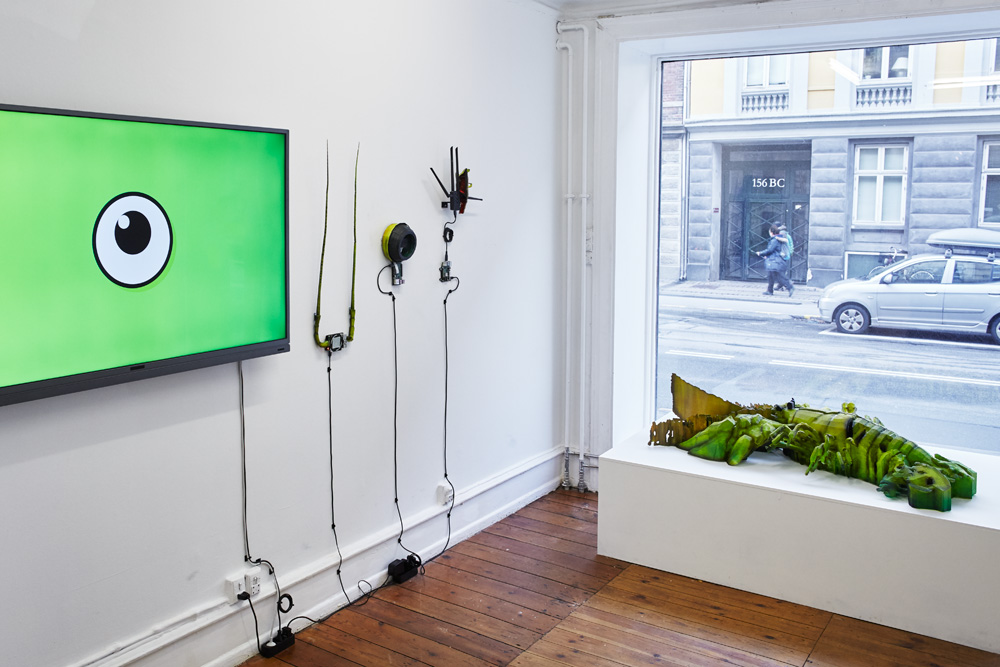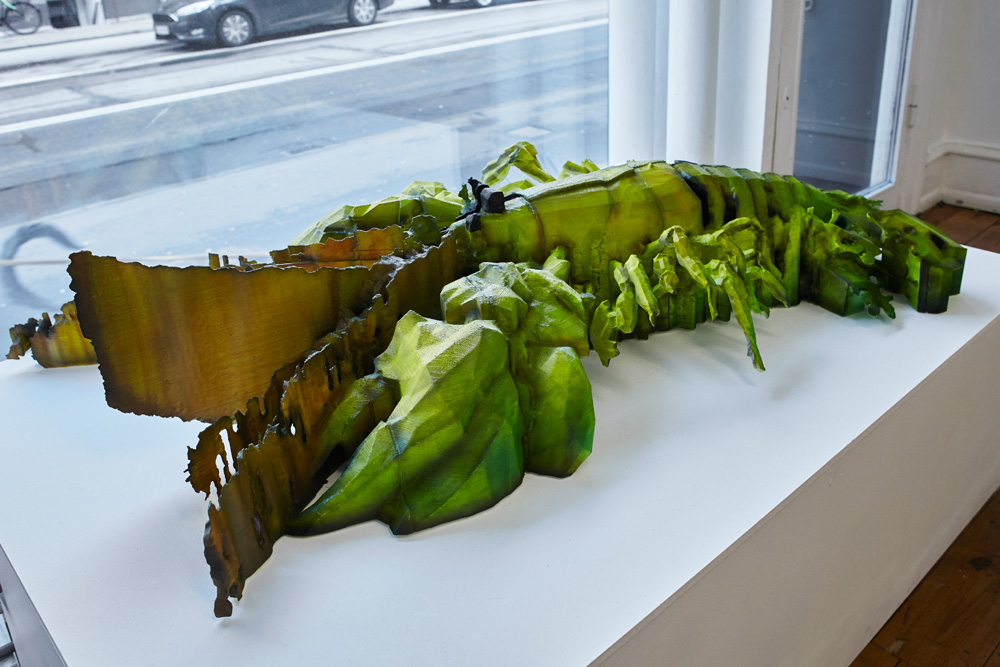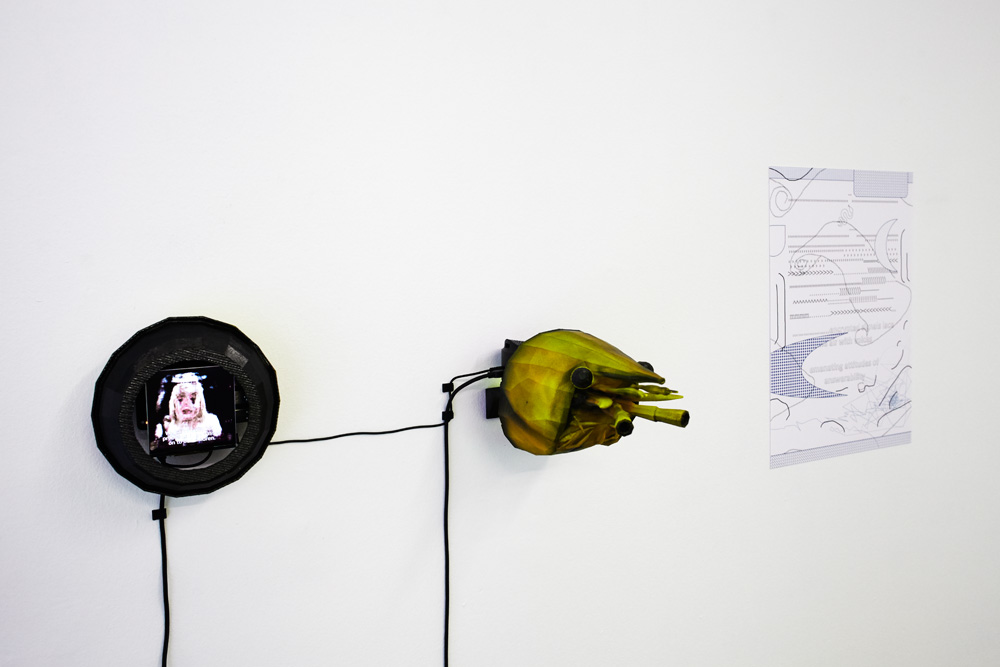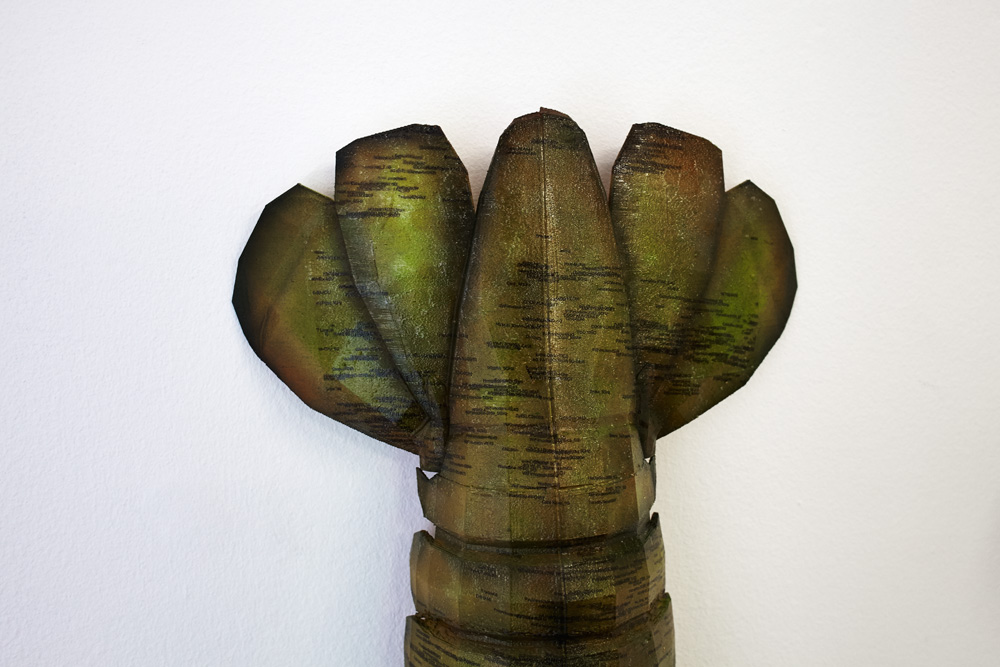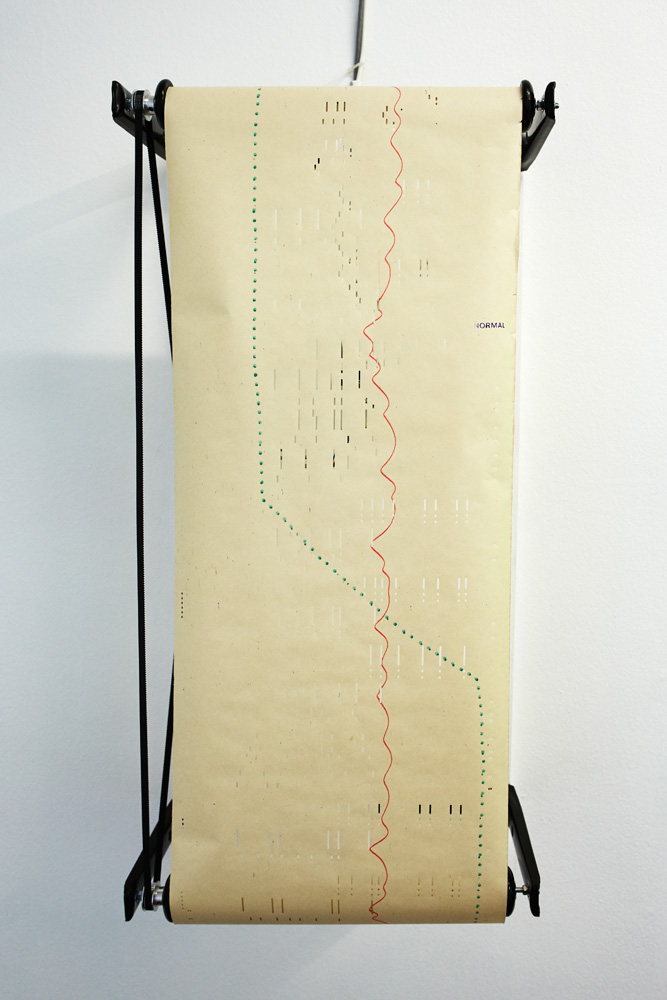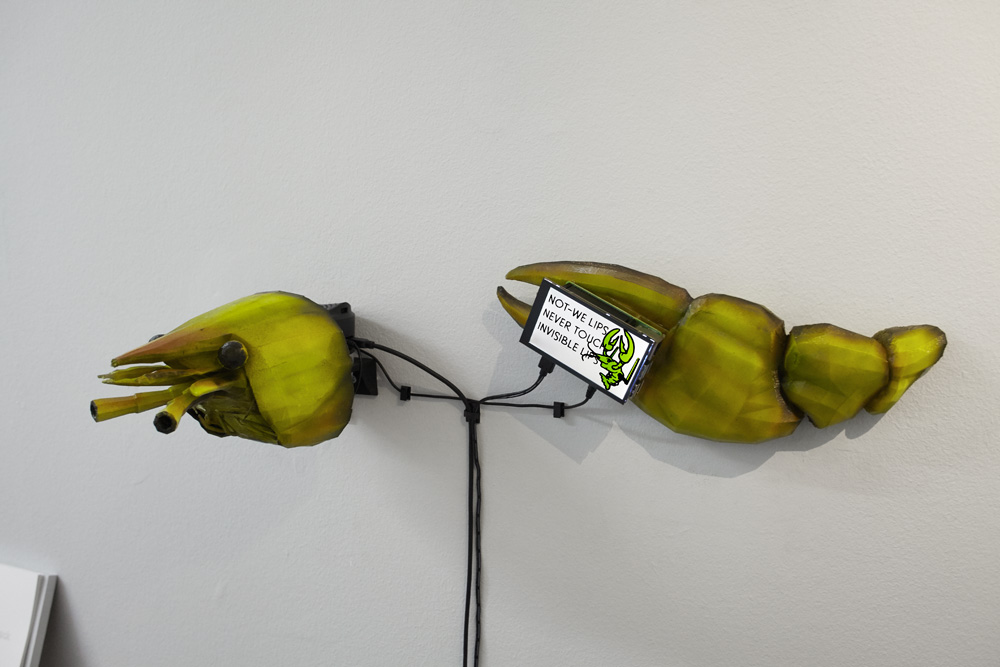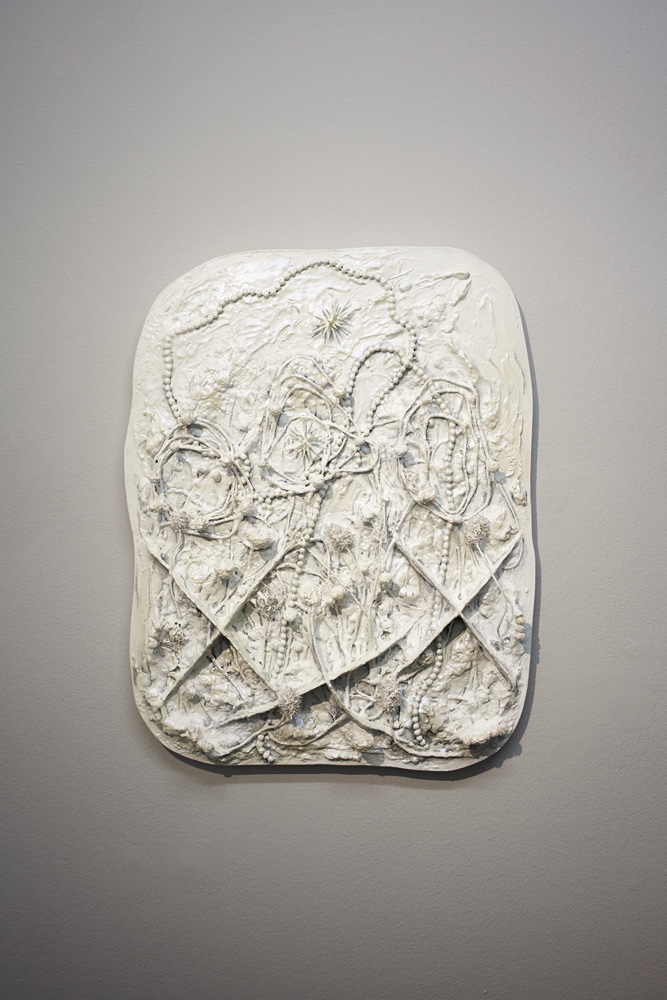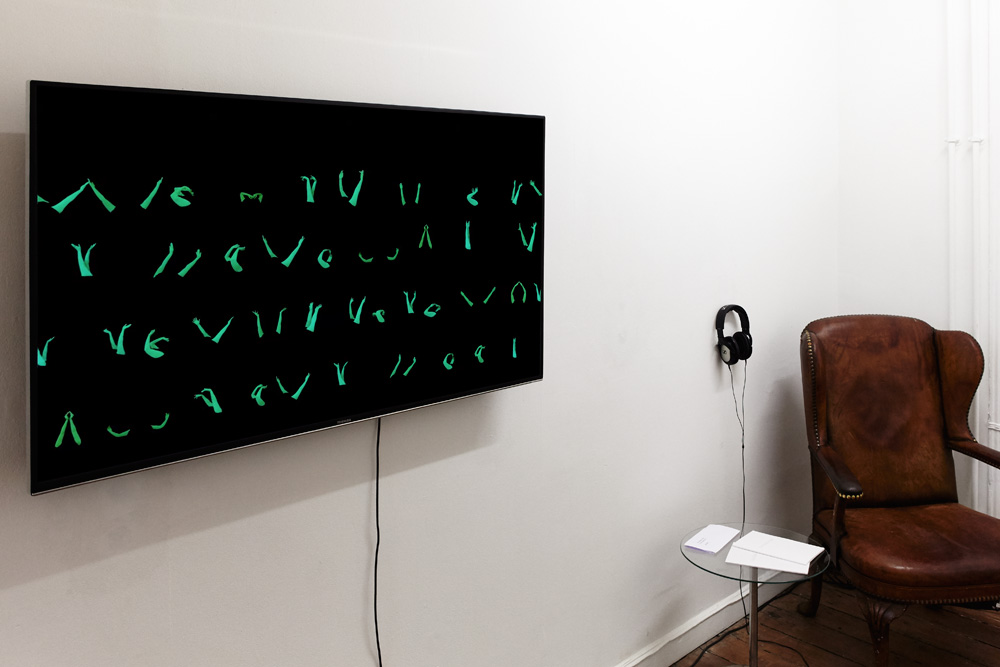Semio-Technical Traffics
Emily Rosamond and Kristoffer Ørum
Curated by Iben Bach Elmstrøm
10 January - 15 February, 2020
Wi-Fi networks, radio communications, and chemical signals fill the air around us, mostly undetected by the human senses. We engage with networks through icons on hand-held devices, assuming that they will ‘work’, but rarely questioning their histories, technical bases, spatial distributions and politics. Given that the airwaves conceal information to some while revealing it to others, how can invisible communication systems be conceptualized, repurposed or manipulated? Asking this and related questions, and looking at the relationships between technological signalling and the chemical semiosis evolved by animals and plants, the artists explore and disrupt the flow of information travelling through water and air, examining what it means to interfere with network communications.
Emily Rosamond presents a new series of works that think through what it means to listen to ‘background noise’ and tap into hidden communication systems. Through diverse media including a bookwork, video and kinetic sculpture, she assembles a constellation of stories and material reflections about transmitting, detecting, and concealing signals. From Hollywood actress Hedy Lamarr and avant-garde composer George Antheil’s invention of a ‘Secret Communications System’ to help the Allied naval effort during WWII, to acacia trees warning each other to defend themselves against predation by sending ethylene distress signals through the air, from frequency hopping radio waves to plant hormones, the series explores how the ability to predict the future or detect risks often has to do with developing complex forms of ‘listening’ for faint signals – or, equally, with creating distributions of predictability, whereby some are left out of the loop.
Kristoffer Ørum asks viewers to reflect on who has authority over the distribution of information through the networks that course through homes, offices and cities. Wi-Fi networks are designed to control access to information; yet these powerful routers spread private information far beyond its intended audiences and territories. Transmitted information lives an uncontrolled life, and blurs the line between private and public. In a landscape full of information, invisible mechanisms of ownership and control are heavily contested. The works activate and make visible a local landscape of Wi-Fi networks, blurring the understanding of private and public through the invisible and unregulated electromagnetic landscape we create in our domestic surroundings.
Bios
Emily Rosamond is a Canadian artist, writer and educator. She is Lecturer in Visual Cultures at Goldsmiths, University of London, where she serves as Joint Programme Leader, BA Fine Art and History of Art, and Department Chair of Learning and Teaching. Her art practice currently explores prediction, divination and the materiality of signalling, using a variety of media. She has exhibited in Canada, the US and Europe, most recently at APT Gallery, London; Leu Gallery, Belmont University, Nashville; Karst, Plymouth; and ASC Gallery, London. Her recent academic publications have appeared in Theory, Culture & Society, Journal of Aesthetics & Culture, and Finance and Society, among others. Her first monograph is forthcoming from Zone Books.
Kristoffer Ørum is an interdisciplinary artist, researcher and writer with an extensive list of exhibitions, performances and publications both Denmark and abroad. Based in Copenhagen, he works in the intersection between everyday life and ubiquitous digital ecologies of a contemporary western lifestyle. He holds dual degrees from Goldsmiths University in 2004 and the Royal Danish Academy of Fine Arts in 2006.
Iben Bach Elmstrøm is a curator based in Copenhagen, Denmark. She works with a range of contemporary art and curatorial projects concerned with the interplay between aesthetic dimensions, conceptual potentials and political imaginaries. She has curated the exhibition The Emperor is Naked at Waiting Room in Minneapolis (2017) and Exchanging Money for Working Space at SixtyEight Art Institute (2017), as well as Ars Memoria featuring Helene Nymann at ‘The Round Tower’, a historic observatory from 1642. Most recently she curated the exhibition The Object is to Change the Soul at Heartland Festival. Currently, she is working at CHART on design and public programs.

